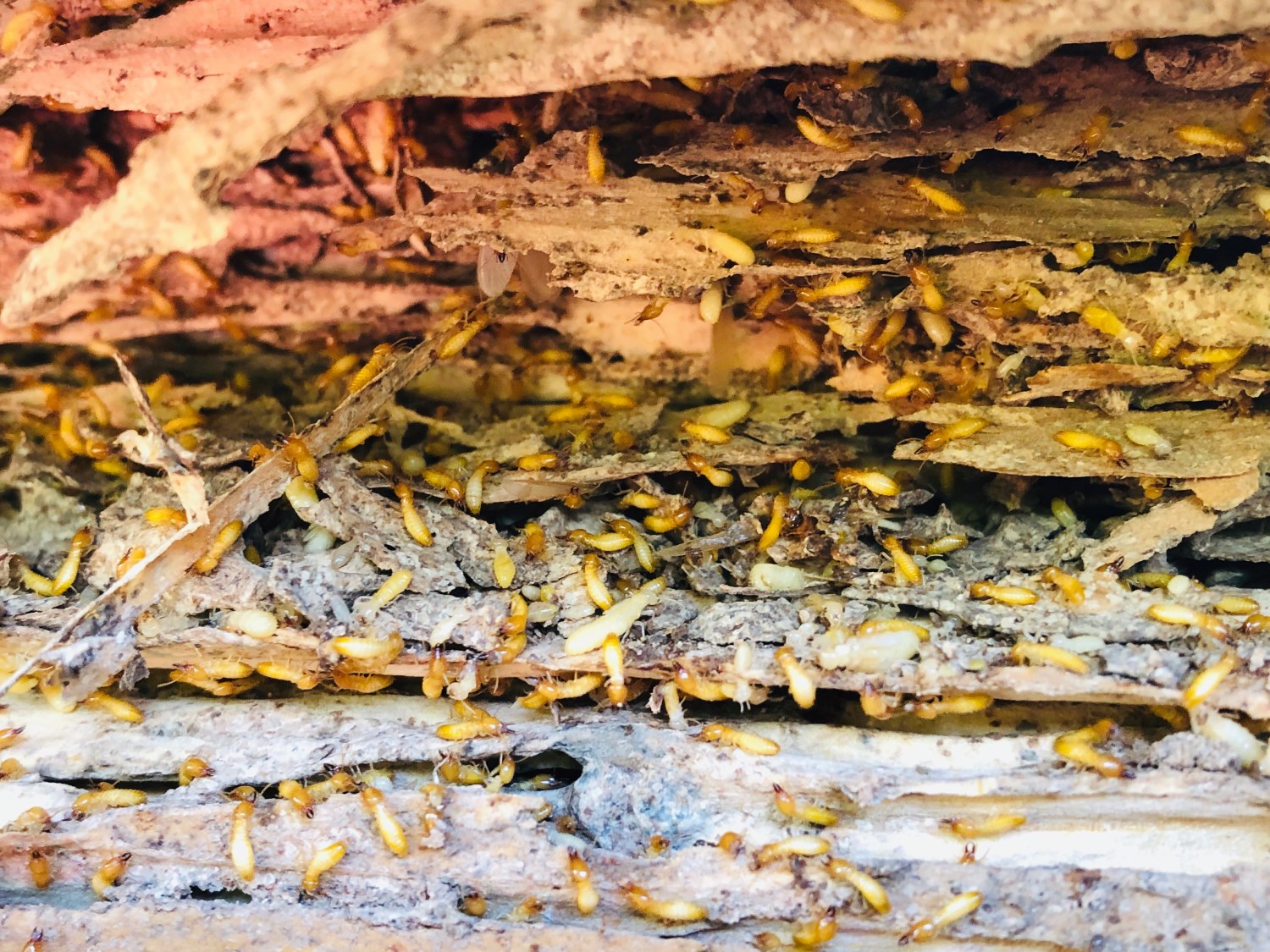The name Termite is derived from the Latin word Termes, which translates to white ant or woodworm. Termites are a member of the order Isoptera and bear a strong resemblance to cockroaches with a segmented body structure. A notable difference in appearance is that termites’ abdomens are divided into ten segments rather than the cockroach’s three. Termites are also mostly blind and rely on the use of a multifunctional antennae to navigate. In addition, they have strong mouthparts giving them the ability to gnaw directly through wood.
These eusocial insects structure their colonies based on a caste system, similar to bees. The lifecycle of a termite begins as an egg and then progresses directly into the nymph stage. After molting several times as a nymph, their body will ultimately develop into one of the following four social classes:
• Queen
• King
• Worker
• Soldier
The king and queen are responsible for reproducing and typically serve no other function in the colony. They are both born with wings and, prior to mating, take flight together to choose a site for beginning a colony. Once the location has been chosen, they rip off their wings to mate and begin building their nest. After maturing, a queen can produce up to 40,000 eggs in one day and can live between 40 to 50 years. With their rapid rate of reproduction, scientists estimate termites make up over 10% of the biomass of all living animals on earth.
Workers are responsible for feeding the colony, taking care of the young, and maintaining the structure of their home. They are drawn to the cellulose found in wood and other dead or rotting objects such as decaying leaves. Worker termites are blind and do not have wings.
As their name suggests, Soldiers are defenders of the colony. They can be distinguished from workers by their larger head size in comparison to the rest of their body. Soldiers are incredibly territorial and will go to war with any neighboring colony deemed as a threat. They will fight until the death of their enemy, often leaving a pile of dead termites behind.

